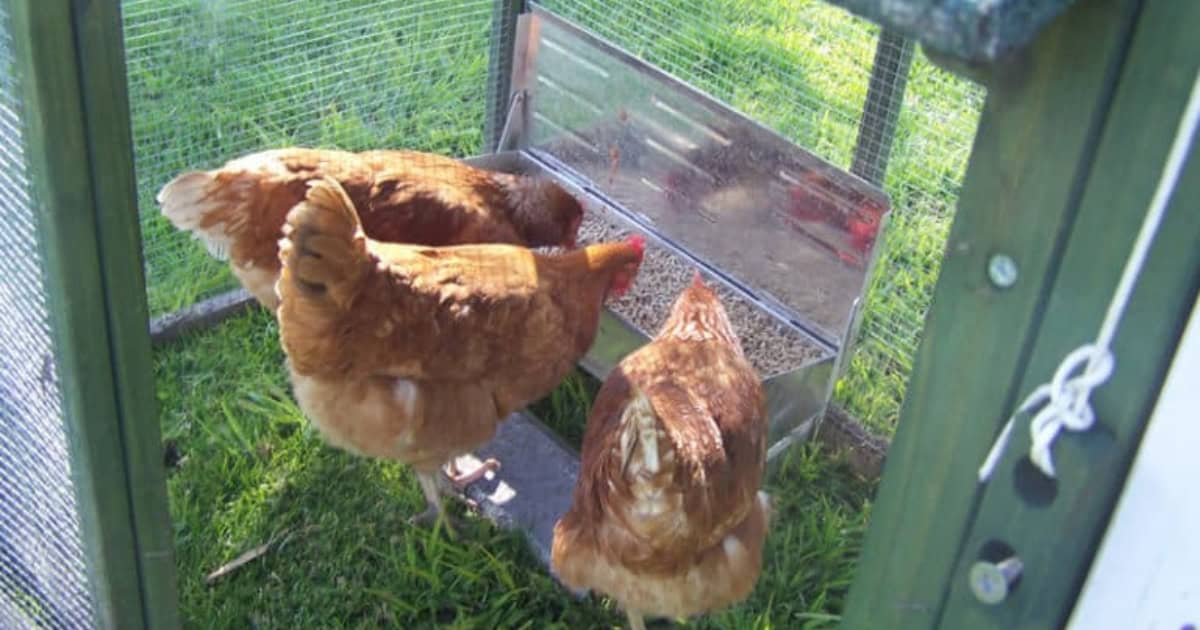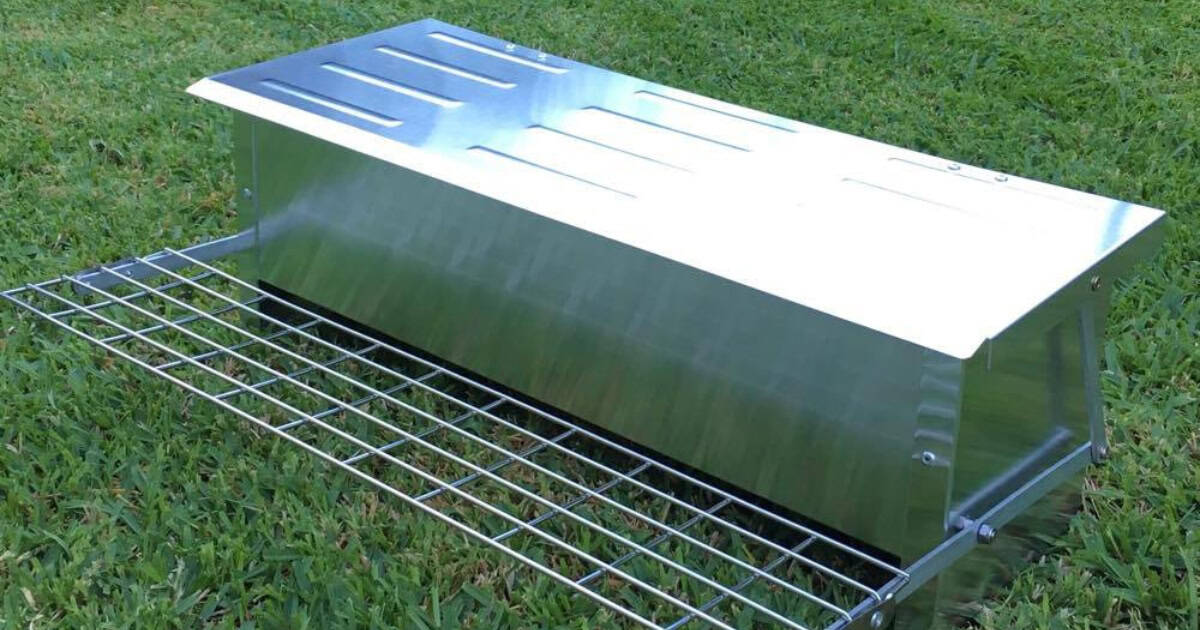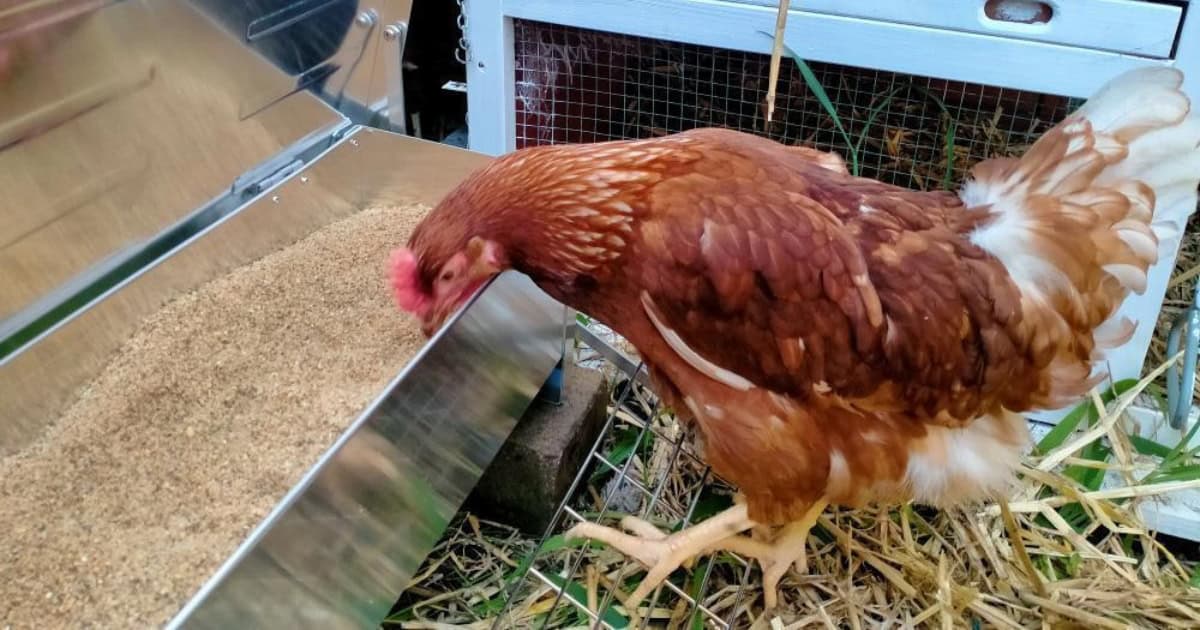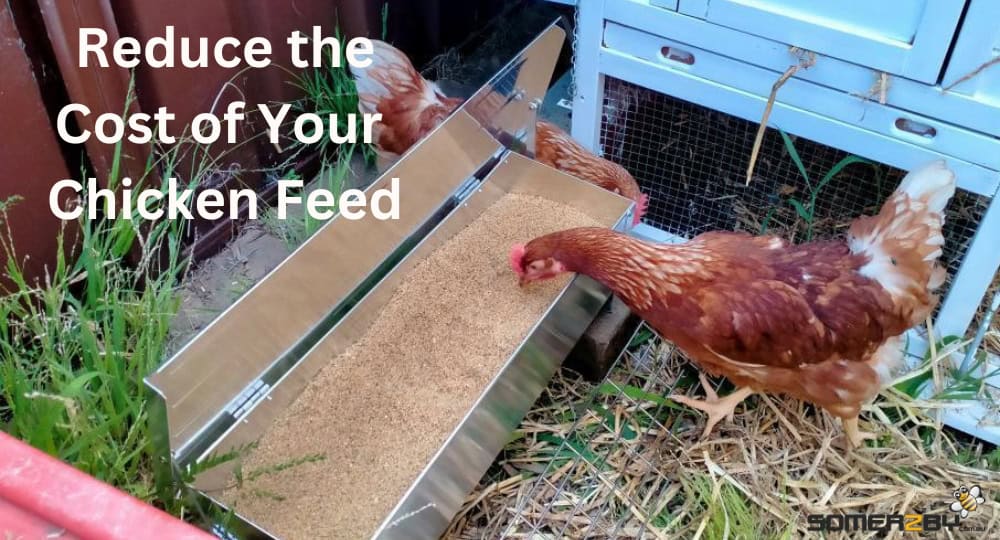Chickens
Reduce the Cost of Your Chicken Feed
Save feed from feral birds with a wild bird-proof feeder
Happy and healthy egg-producing hens require a good diet containing ample protein. If you are finding the cost of feeding your chickens is growing, there are some simple steps you can take to reduce these costs. In this article we will look at how you can prevent chicken feed wastage; save chicken feed from wild birds and use less commercial feed by supplementing it with other nutritious foods. Hands down, the best way and our top tip to save money and prevent wastage is to use a wild bird-proof feeder (also called an automatic feeder). This type of feeder requires the weight of a chicken on the aluminium tray to release feed, which means that feed cannot be accessed by smaller, wild birds and animals(ie mice) resulting in less feed wastage. This type of feeder also features a water-proof lid that automatically closes, which will help keep your feed dry.
Hands down, the best way and our top tip to save money and prevent wastage is to use a wild bird-proof feeder (also called an automatic feeder). This type of feeder requires the weight of a chicken on the aluminium tray to release feed, which means that feed cannot be accessed by smaller, wild birds and animals(ie mice) resulting in less feed wastage. This type of feeder also features a water-proof lid that automatically closes, which will help keep your feed dry.
Another tip for preventing wastage is to store your feed in a metal garbage bin, to prevent rodent access and keep your feed dry.
To keep your feed costs down even further, consider supplementing their diet by providing other nutritious food sources as well as commercial pellets. If you have a vegie patch, why not grow some greens especially for your chooks. Chooks love leafy green vegetables like silverbeet/chard, lettuce, cabbage, kale, spinach and bok choy. They also enjoy eating corn, millet, wheat, oats, peas and sunflowers.
Got more eggs than you know what do to with? Why not feed them to your chickens, boiled or poached eggs are fine – however you should not give them raw eggs. You can also feed your chickens vegetable scraps, grains and dried egg shells from your kitchen, so don’t throw them out!


Savings are to be made by buying feed in bulk or mixing your own chicken feed. If you decide to mix your own feed, you will need good knowledge of your chickens nutritional needs. You can also stretch your layer pellets by mixing them with scratch grains or other feeds at the rate of 50/50, since scratch grains are often cheaper than layer pellets.
Free range your hens or use a chook tractor to allow your chickens to graze on your grass, and forage for insects and worms. This way they can fertilise your lawn and they will need less pellet feed. Make sure you move them around so they don’t over graze a single area- you may wish to consider using a chook tractor to make this easy.
The Worthington method (developed by Jim Worthington) allows your Chickens access to ample greenery, which may help you reduce your feed costs. As well as greenery- they should also have access to whole grain, preferably wheat (alternatively good oats or barley) and importantly, some high-protein food eg: fish meal ; soymeal, chick peas, cracked beans, meat meal or flakes. If you have not fed your birds like this since they were young they might initially reject it.
The Balfour method named after Lady Eve Balfour who invented it. With this method you will not need a compost pile, because the chicken run is the compost pile. You use an ordinary coop, and place a wind-sheltered scratching pen in front of, or around it. In this pen, you place your compost- all the vegetable matter you can get, the more, the better. Your birds will love scrapping around in this compost to forage for bugs.
As well as the coop and scratching pen, you would have 2-3 grazing pens. These are just fenced pens with gates arranged in such a way that the chickens can be admitted access to one of the pens while being denied access to the other. The two pens should be put down on a grass, clover, and herb mixture. The idea being, you allow the hens to run in one pen for a few weeks until the grass is eaten right down, then you admit them to the other.
See Also
- Best Chicken Breeds For Laying Eggs
- How To Prevent Rodents From Eating Your Chicken Food
- The Chook House That Your Chickens Will Love




